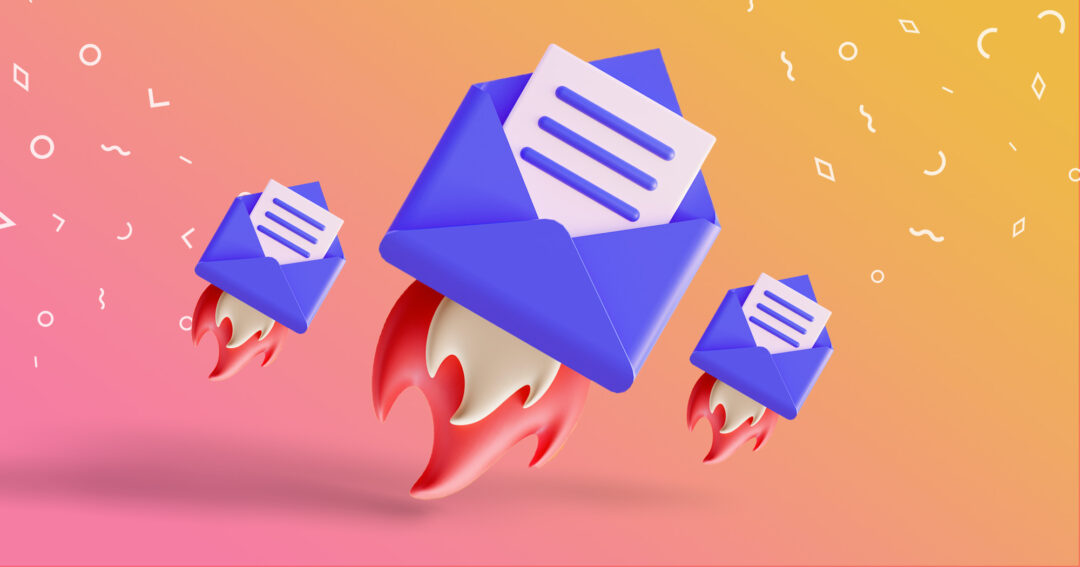
In today’s digital landscape, email continues to be a cornerstone of business communication and marketing due to its direct and personal nature. However, its success hinges on not just sending messages but on ensuring those messages reach and engage recipients while bypassing spam filters.
For instance, if you begin by emailing 30 contacts and then suddenly escalate to 200 contacts by the next day, this sharp increase in email volume can set off alarms with spam filters. These filters are designed to detect unusual spikes in activity, which can suggest spammy behavior or automation rather than genuine engagement. Such a sudden rise can lead to your emails being flagged as spam, impacting your deliverability and effectiveness. This scenario highlights the importance of a gradual email warm-up process.
By incrementally increasing your email volume and consistently engaging with recipients, you build a positive reputation with email service providers (ESPs). This careful approach helps establish credibility, improve deliverability rates, and foster trust with both the ESPs and your audience.
The email warmup process is essential for establishing credibility with email service providers (ESPs) and improving email deliverability and trust. It involves a strategic approach to gradually increase email volume and ensure meaningful engagement with recipients. Here are the key elements:
- Gradual Volume Increase: Start with a small number of emails and gradually increase the volume over time. This cautious approach helps prevent triggering spam filters, which are sensitive to sudden spikes in email activity.
- Engagement Monitoring: Track important metrics such as open rates, click-through rates, and spam complaints. Analyzing these metrics allows you to refine your strategy, ensuring that your emails are well-received and adjusting tactics to enhance effectiveness.
- Personalization and Segmentation: Tailor your email content to match recipient interests and behaviors. By segmenting your email lists and personalizing messages, you improve relevance and reduce the likelihood of emails being marked as spam.
- Email Authentication: Implement key authentication protocols such as SPF (Sender Policy Framework), DKIM (DomainKeys Identified Mail), and DMARC (Domain-based Message Authentication, Reporting, and Conformance). These protocols help verify your domain’s authenticity, protect against spoofing, and boost your sender reputation, further improving deliverability.
By following these steps, businesses can effectively build their email reputation, ensure their messages are delivered to inboxes, and maintain strong, trustworthy relationships with both ESPs and recipients.
Business Growth Through Email Warm-Up
Strategic Impact
- Engagement: Effective email warm up significantly boosts the chances that your emails will be noticed and engaged with by recipients. By gradually increasing email volume and ensuring high-quality, relevant content, you improve open rates and interaction levels. This not only enhances the immediate effectiveness of your campaigns but also builds a positive reputation with email service providers (ESPs), making future emails more likely to reach inboxes rather than spam folders.
- Connections: A well-executed warm-up strategy fosters deeper and more meaningful relationships with your audience. By personalizing and segmenting your emails, you cater to the specific interests and needs of recipients, making your communications more relevant and engaging. This personalized approach helps in building trust and rapport, encouraging recipients to view your emails as valuable and worthwhile, rather than as intrusive or irrelevant.
- Growth: Establishing a solid email warm-up process is crucial for long-term business growth. By laying the groundwork for high deliverability and engagement, you create a reliable communication channel that nurtures customer relationships and loyalty. Consistently reaching your audience’s inbox and maintaining positive engagement patterns help in building a loyal customer base, driving repeat business, and fostering long-term success. The strategic impact of email warm-up extends beyond immediate results, setting the stage for sustained business growth and a strong, enduring presence in the digital marketplace.
The Future of Email Marketing
Adapting to Changes
Despite the rapid evolution of digital technologies and platforms, email continues to be a robust and influential communication tool for businesses. To maintain its effectiveness and relevance, businesses must adapt to shifting consumer behaviors and technological advancements. Here are key strategies for adapting email marketing to future trends:
- AI-Driven Personalization: Leveraging artificial intelligence (AI) to tailor content for each recipient has become increasingly important. AI-driven tools can analyze vast amounts of data to understand individual preferences, behaviors, and engagement patterns. This enables businesses to deliver highly personalized and relevant content to each recipient, improving open rates, click-through rates, and overall campaign effectiveness. By customizing email content based on recipient data, businesses can enhance user experience and foster stronger connections with their audience.
- Interactive Content: Engaging recipients more effectively through interactive content is a growing trend in email marketing. Incorporating elements such as polls, surveys, quizzes, and interactive images into emails can capture recipients’ attention and encourage active participation. Interactive content not only makes emails more engaging but also provides valuable insights into recipient preferences and behavior. This approach helps in creating a more dynamic and interactive email experience, which can lead to higher engagement and conversion rates.
- Omnichannel Experiences: Providing a seamless experience across all platforms is crucial for modern email marketing strategies. Consumers interact with brands through multiple channels, including email, social media, websites, and mobile apps. Ensuring a consistent and integrated experience across these channels helps in reinforcing brand messaging and enhancing user experience. By aligning email marketing efforts with other digital channels, businesses can create a cohesive and unified customer journey, improving overall effectiveness and driving better results.
In summary, adapting to the future of email marketing involves embracing technological advancements and changing consumer expectations. By leveraging AI-driven personalization, incorporating interactive content, and providing seamless omnichannel experiences, businesses can stay ahead in the competitive digital landscape and continue to drive successful email marketing campaigns.
Conclusion
In the current digital landscape, achieving effective email deliverability demands a well-planned and strategic approach. Email warm-up processes play a crucial role in ensuring that messages are successfully delivered to the intended recipients and are not mistakenly flagged as spam. By gradually increasing email volume and engaging with recipients, businesses can build a positive reputation with email service providers (ESPs), which significantly improves the chances of reaching the inbox.
Key Strategies for Success:
- Deliverability: Ensuring that emails consistently land in recipients’ inboxes is foundational to any successful email marketing strategy. This involves carefully managing email volume, monitoring engagement metrics, and employing best practices for email authentication. A structured warm-up process helps in establishing credibility and avoiding pitfalls that could otherwise lead to emails being marked as spam.
- Engagement: Crafting emails that capture and maintain recipient interest is essential for maximizing impact. Personalized content that resonates with the audience increases the likelihood of engagement, such as opens, clicks, and conversions. Engaging with recipients through relevant and timely messages fosters stronger relationships and encourages positive interactions.
- Personalization: Tailoring email content to individual preferences and behaviors not only enhances relevance but also helps in avoiding spam filters. Personalized emails are more likely to be read and acted upon, which in turn improves overall campaign effectiveness and customer satisfaction.
By focusing on these strategic elements—deliverability, engagement, and personalization—businesses can enhance their email marketing efforts, build stronger connections with their audience, and drive higher conversion rates. Implementing a thoughtful email warm-up strategy sets the stage for sustained success, allowing businesses to navigate the complexities of the digital ecosystem effectively.
Embracing these strategies ensures that businesses not only reach their target audience but also resonate with them, driving long-term growth and prosperity. In a landscape where digital communication is increasingly competitive, leveraging these practices will help businesses stay ahead and achieve their marketing goals.
